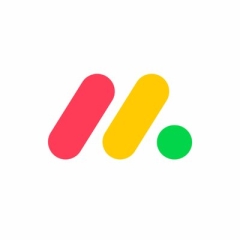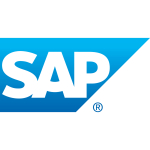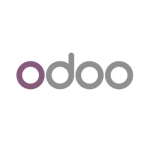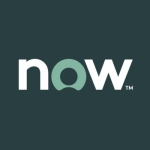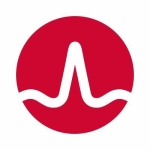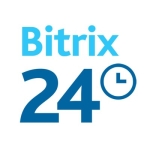What is our primary use case?
I use it pretty much specifically with a vendor to some of my other companies. They do have their own board to manage the business between them and those companies.
Since we use an inventory management tool and we're a hemp and cannabis solutions company, we integrate with a number of different software. It's definitely made it a lot easier and I've incorporated it into our SOPs, so it's fundamental to our business at this point.
How has it helped my organization?
I've incorporated it into our standard operating procedures. It is fundamental to every facet of the business, as now something as simple. I'm a little upset lately, since they changed for security purposes, the email function to the board, as I used to have my sales reps email their orders (when they got them) to a Monday board that goes to my office manager, where he knows to make an invoice and go ahead and move forward with things to invoice the client using QuickBooks.
Just the overall flow, once that client paid that invoice, I have an automation set up that, depending on what revenue bucket it falls in, it will trigger, to tell that project manager for that board that a new project has been paid and she can go ahead and start work and the team can start formulating or we can start ordering ingredients, or whatever the case may be. It's basically incorporated into every portion of our business now.
What is most valuable?
The types of columns that I'm able to put into a particular board and the data that that captures. I like the fact that I could drop in PDFs. I can't do that with Excel. I can just drop in different types of files which I couldn't necessarily do in Excel. I can drop images into Excel, however, I can't drop files that are PDFs. Most of the things that I'm trying to collect on a particular client are signed documents and working documents.
It is user-friendly. I like the forms. I can have clients fill out a form. As far as making it easier, I would say the email feature, the automation really makes it special. The email feature where if say a status changes to complete, the fact that I can have a scheduled email to a client to say, "Thank you for doing business with us." I can a personal touch on it and have that go out on a timed basis so many days after they completed a project with us, they will get the message. Things like that have made life easier to be able to automate that stuff.
The sub-items have been incredibly helpful.
What needs improvement?
Monday is one of the more expensive tools available.
The columns don't have descriptions. I would love to be able to write an explanation for a column. I'm only able to label and title it.
Based on each group, I wish each group could have a snippet. The top of the board has a little note section or a summary, however, sometimes I do it by vendor, where each group on a particular board is a type of vendor, where maybe we have co-packing projects or something like that going on. Therefore, it gets complex.
If a new employee were to come in, it requires a lot of training to get them to understand the board, as there are things they just have to know. For example, a certain vendor is a type of lab to which we have to submit testing to, and we send specific types of products to certain labs. There's no way for me to write a little blurb about each group, rather than putting in a dummy or test item and having a comment section on that, which looks funny. The same thing goes for each of the columns. If you were able to hover over and be able to see it the way that you see a long text, if you hover over the long text boxes, you can see the whole thing. And if you were able to do that same function for one of the groups or column headings, it would be really helpful.
There wasn't much onboarding assistance. There are still things that, since we have a number of companies and I'm super busy going to these webinars, I sign up and I never can quite attend. It would be nice if there was a little bit of hands-on onboarding help. The same way that HubSpot, for instance, has its team reach out to you to say, "Hey, how can we improve?" I've organized it so that I could grab all kinds of KPIs and make my dashboard super intuitive and really gather a bunch of important information that I could use to improve the business, however, nobody really assists with that.
There are learning modules where I could go in, however, I'm very specific about the things I need to accomplish, and sitting on an hour-long video that doesn't pertain to my exact situation, where I have to play around with it more. Surely, I play around with things and I'm better than most at software stuff, as we have a software company, therefore, I'm used to dealing with this kind of thing. However, with the setup time, it would be really cool if they reached out to say, "Hey, if there's anything that I know you know that this software can do, that you're not utilizing since you just don't have the time to watch a bunch of videos and play around with it."
It was difficult to get to adopt it, however, it's fundamental now to how we run the business. We couldn't function without it, at this point, unless I adopted something new and applied the same, just I've invested so much time into creating processes around Monday.
With automation, I've gotten to the point where managing the boards is somebody's half of their job. Managing a Monday board is half of somebody's time. While it's a lot of work to use it, it does a lot of things that eliminate a lot of work that would need to be manual if we were using Excel or something that's free.
The clocking in and clocking out for people who are doing projects could be improved. I know that there's an integration that I could do with something called Time, or there are a number of others that I can connect to, however, it's got the functionality to do it. We're trying to use just Monday to do that clocking in, and clocking out, on various projects, however, it could be better.
For how long have I used the solution?
I've used the solution for about two-and-a-half years.
What do I think about the stability of the solution?
It's pretty stable.
Every once in a while, there may be some downtime, however, I just assume that is when they're making a lot of changes. Sometimes it's really slow, which sucks, as I have my employees clock in using it.
Right after I moved a lot of our people over to hourly, we kept having some connection issues or it was slower than other websites were, due to an update or something like that.
What do I think about the scalability of the solution?
The solution can continue to scale.
How are customer service and support?
Technical support has been great.
When you make requests, sometimes they say no. Like with the email change, I had to change up my process. They said it was for security purposes and they simply said that no, it's just going to be these long jingled things that make no sense, instead of whatever the old one was. They just simply said, we have to change them now to be a bunch of mixed letters and numbers and symbols for security purposes. I'm not sure why, and it is what it is. I'm fairly used to software people saying, "Your request, thank you for submitting it, but it is what it is." However, they're fast to reply.
How would you rate customer service and support?
Which solution did I use previously and why did I switch?
I was using Teams to try to organize everything. Monday ended up being able to solve pretty much all of my problems. I've now incorporated it into all of my SOPs.
I wasn't quite able to organize the flow of things and it didn't have the automation set up, and it was just difficult to visualize projects. As I couldn't do everything on the project management tool, I was doing some things on Excel. The fact that Monday is very similar to Excel, it made it a lot easier.
How was the initial setup?
I had to basically get rid of my entire old team and onboard a whole new team. It was actually pretty intense. It was a very difficult thing. The old team was just stuck in their ways. We moved from being a smaller company and we were growing at a really fast rate, and I was the only one who was really organizing things. Now, I have a whole operations team, however, for a couple of years we were in a growth phase and it's just that the old team wasn't able to adopt the Monday change.
What was our ROI?
I have seen an ROI. I incorporated it into my SOPs. My business pretty much runs on Monday. My whole team actually is able to use this, however, I did have to have a lot of turnover to get people to use it. Of course, adopting change is always difficult, however, now my entire team does know how to use it and does use it, as it's a part of their job. That said, that was difficult to onboard originally.
What's my experience with pricing, setup cost, and licensing?
It's one of the more expensive tools.
Which other solutions did I evaluate?
I looked at a few others, however, I feel like Asana is very similar. I've worked with other companies where I'm able to log in to a particular board the same way you can on Monday. It's very, very similar and people like that just as much. I just went with Monday as it felt right to me.
Other software have very similar programming. I was pretty set on it. I went looking for a new tool and it met all my needs in a demo, and with a 30 day demo they were promoting that month. It worked out and now I can't not use it. I'm pretty happy with it, even though it's really expensive.
What other advice do I have?
I'm a customer and end-user.
I'd rate the solution nine out of ten. There's a few things that would be great, however, I don't know if it's me not giving it the time to be able to do it correctly or if the program just simply can't do it.
Disclosure: My company does not have a business relationship with this vendor other than being a customer.

